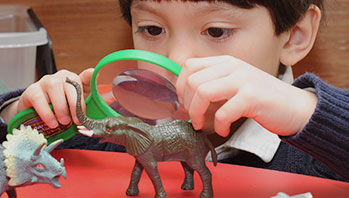- number cards
- number chart
- plastic vegetables
- play shopping cart
- count
- leaf
- how many
- root
- shopping
- vegetable
MA Standards:
Writing/W.PK.MA.2: Use a combination of dictating and drawing to explain information about a topic.
Mathematics/Counting and Cardinality/PK.CC.MA.4: Count many kinds of concrete objects and actions up to ten, using one-to-one correspondence, and accurately count as many as seven things in a scattered configuration.
MA Draft STE Standards:
Physical Sciences/Matter and Its Interactions: Structure and Properties of Matter/PS1.A: Describe, compare, sort and classify objects based on observable physical characteristics, uses, and whether it is manufactured as part of their classroom play and investigations of the natural and human-made world.
Head Start Outcomes:
Literacy Knowledge/Early Writing: Uses scribbles, shapes, pictures, and letters to represent objects, stories, experiences, or ideas.
Logic and Reasoning/Reasoning and Problem Solving: Classifies, compares, and contrasts objects, events, and experiences.
Science Knowledge/Scientific Skills and Method: Observes and discusses common properties, differences, and comparisons among objects.
PreK Learning Guidelines:
English Language Arts/Composition 16: Use their own words or illustrations to describe their experiences, tell imaginative stories, or communicate information about a topic of interest.
Mathematics/Number Sense 2: Connect many kinds/quantities of concrete objects and actions to numbers.
Mathematics/Patterns and Relations 8: Sort, categorize, or classify objects by more than one attribute.
Count the Veggies

© Commonwealth of Massachusetts, Department of Early Education and Care (Jennifer Waddell photographer). All rights reserved.
Skill Focus: Counting, Vocabulary
Have children write a shopping list for their grocery store (see Block Center). Ask them to tell how many numbers of different items they will need for their special dish. As they shop, have them count the objects (e.g., “4 tomatoes”) that they “buy.”
Depending on skill level, give each child a card with a number on it and ask him or her to place that many root/leaf vegetables in the cart. You may want to vary the number and type of vegetables each day.
Adaptation: For groups with a varying age range you may wish to challenge older children to perform simple addition and subtraction problems with the vegetables. For example, say, I have 2 potatoes and 3 cucumbers. How many vegetables do I have in all? Yes, 2 + 3 = 5. I have 5 vegetables in all. I think I have too many cucumbers. I will take one away and put it back. How many do I have now? Yes, I have 2 cucumbers. 3 – (take away) 1 = 2.
